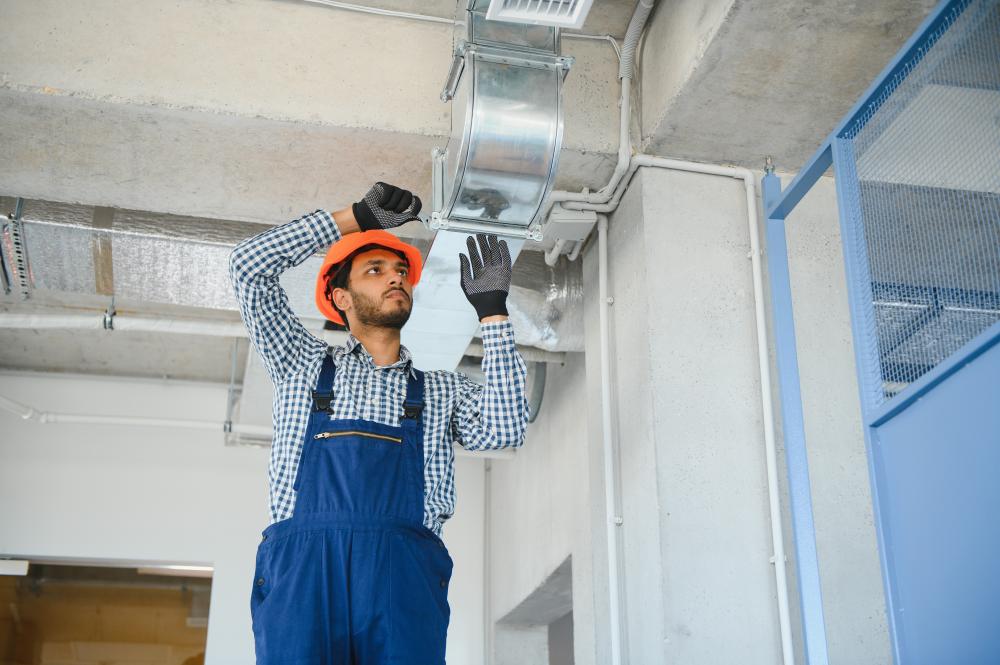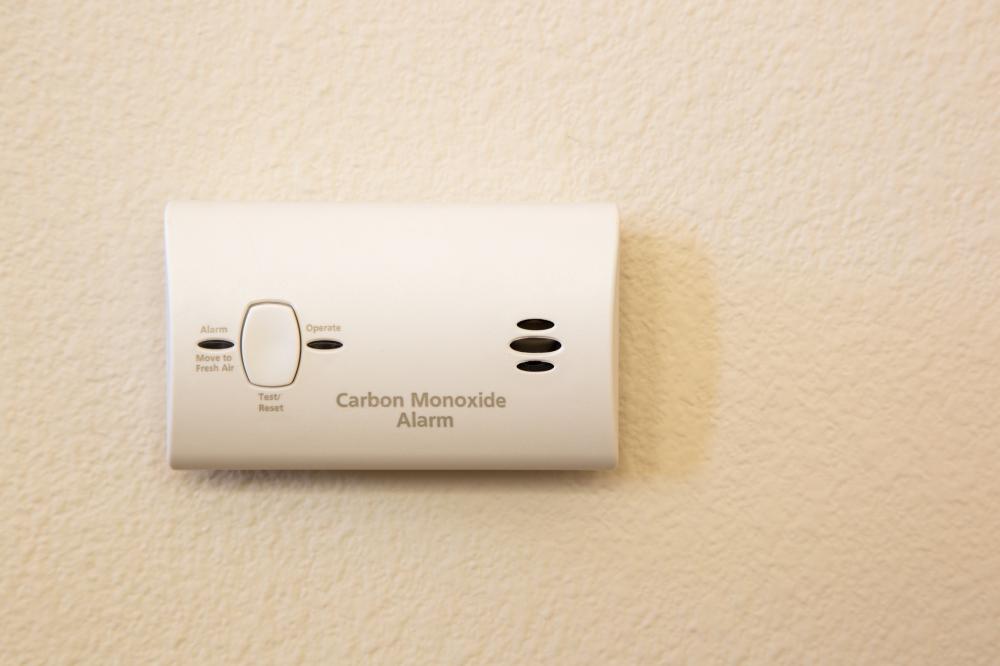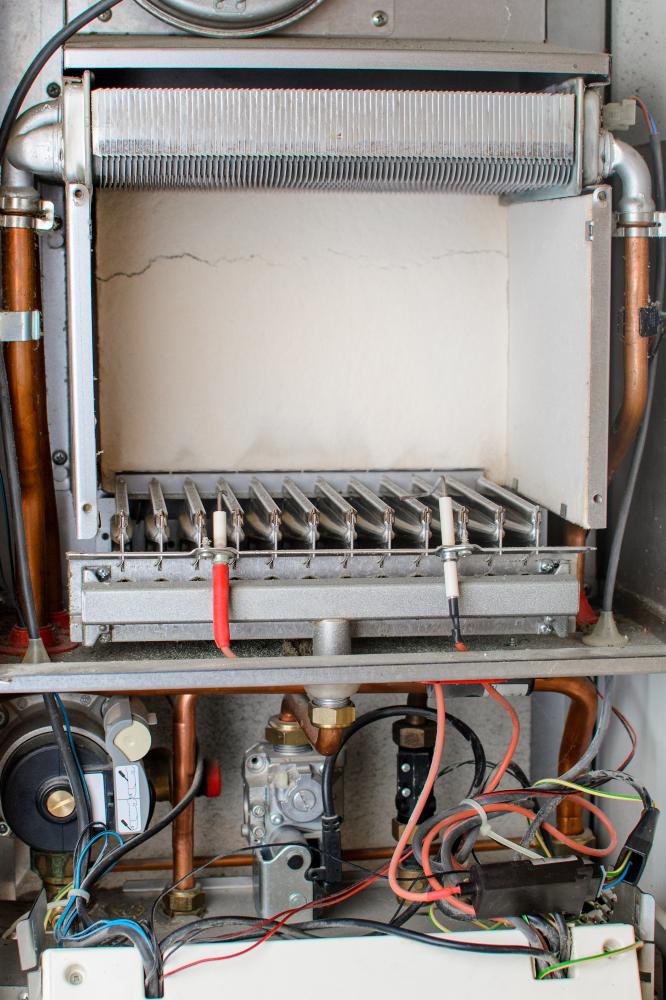
Understanding the Dangers
At San Fernando Valley HVAC, ensuring the safety of our clients is paramount, and part of that is Understanding Carbon Monoxide Risks with Gas-Powered HVAC Systems. Carbon monoxide (CO) is a colorless, odorless gas that can be lethal. It originates from the incomplete combustion of fuels such as natural gas, propane, and oil, commonly used in HVAC systems.
Our experience has shown that negligence in maintenance can elevate the risk of CO exposure. Broken heat exchangers, clogged air filters, and malfunctioning venting systems are typical culprits. Over time, these components may degrade, allowing CO to seep into your living spaces. Attention to these elements is crucial for Understanding Carbon Monoxide Risks with Gas-Powered HVAC Systems.
Recognizing the Signs
As we work closely with homeowners, it is essential to stress the importance of recognizing CO poisoning symptoms. They often mimic those of the flu, creating potential for misdiagnosis. Headaches, dizziness, nausea, and fatigue are all common indicators. However, unlike flu, CO poisoning does not involve nasal congestion.
If multiple occupants in a home show these symptoms simultaneously, it could indicate a CO leak. Awareness of this can be a lifesaver. Prompt action is key, and we advise that anyone suspecting CO exposure evacuates immediately and seeks emergency assistance. Understanding Carbon Monoxide Risks with Gas-Powered HVAC Systems involves being prepared to act swiftly to ensure well-being.
Prevention Techniques
Regular maintenance is the first line of defense against CO hazards. As professionals, we recommend annual inspections for all gas appliances. Qualified technicians can identify potential threats and rectify them before they become dangerous. This proactive approach is central to Understanding Carbon Monoxide Risks with Gas-Powered HVAC Systems.
Installation of carbon monoxide detectors is another vital strategy. These devices serve as an early warning system, alerting homeowners to the presence of CO. Placing detectors near sleeping areas and on each floor maximizes their effectiveness. Our team prioritizes maintenance tips, helping clients keep their detectors functional and reliable.
A common oversight is neglecting air filters. Clogged filters strain HVAC systems, potentially causing heat exchangers to crack. By regularly changing filters, homeowners can significantly reduce this risk. Understanding Carbon Monoxide Risks with Gas-Powered HVAC Systems means acknowledging every small step that contributes to safety.
Installations and Repairs
At San Fernando Valley HVAC, we emphasize the importance of professional installations and repairs. Faulty installations are a leading cause of CO leaks. Our trained technicians ensure that all systems comply with safety standards and local building codes. This precision not only boosts efficiency but also fortifies safety.
Repair work should never be a DIY project. The risks are too significant. Our technicians are not only experienced but also well-versed in the latest safety protocols. By entrusting professionals, you greatly reduce the risk of CO issues.
Ongoing Support and Education
Education is a powerful tool in mitigating CO risks. We offer continuous support and educational resources to clients, fostering a deeper understanding. With resources like maintenance guides and safety tips, homeowners can make informed decisions regarding their HVAC systems.
Community workshops and consultations are also part of our commitment. By engaging directly with the community, we guide on safe practices and the essence of Understanding Carbon Monoxide Risks with Gas-Powered HVAC Systems. Through education, we empower clients to safeguard their homes actively.

Understanding Carbon Monoxide Poisoning
Carbon Monoxide Poisoning is a serious concern that many homeowners need to be aware of. As an HVAC service provider operating in San Fernando Valley, we often encounter clients who are unaware of the dangers of this invisible threat. Carbon monoxide (CO) is colorless, odorless, and tasteless, making it particularly insidious. The gas is a byproduct of burning fossil fuels and can accumulate indoors if appliances like gas stoves, furnaces, or heaters are not properly ventilated. Knowing its sources and effects can prevent tragedy.
Low-level exposure to carbon monoxide can result in symptoms that resemble the flu, such as headaches, dizziness, and nausea. However, higher concentrations can be fatal, leading to severe medical complications like brain damage or death. The effects of exposure are influenced by the duration of inhalation and individual health conditions. Always pay close attention to these warning signs, especially during the colder months when heaters are in frequent use.
Identifying Common Risks
In the HVAC industry, we consistently stress the importance of identifying the risks associated with carbon monoxide poisoning. Homes with older or poorly maintained fuel-burning systems are particularly susceptible. For example, gas-powered water heaters or unvented kerosene heaters can be dangerous if not routinely inspected. Our NADCA-certified technicians recommend annual checks of all combustion-based appliances.
Carbon monoxide detectors are another vital tool in identifying risks. These devices alert residents to elevated CO levels, giving them the chance to evacuate before symptoms appear. Installation is simple, and regular maintenance ensures they remain functional. Testing detector batteries monthly is a small but crucial step in safeguarding your home.
We've found that many residents overlook potential sources of carbon monoxide. For instance, using a charcoal grill indoors or leaving a car running in a closed garage are common but dangerous practices. Discuss these everyday risks with your family to prevent accidental exposure.
Preventive Measures
Preventing carbon monoxide poisoning involves a combination of education and proactive maintenance. First, ensure that all fuel-burning appliances are properly installed and vented. Our experienced technicians can conduct thorough inspections, ensuring that ventilation systems are functioning correctly.
Consider switching to electric appliances, which eliminate the risk of CO emissions. While this may require an initial investment, it reduces long-term health risks. Additionally, fostering good habits like never running a generator indoors or using a gas oven to heat your home further enhances safety.
Education plays a pivotal role in prevention. Simple steps like understanding the symptoms of carbon monoxide poisoning or knowing how to respond to a detector alarm can save lives. Homeowners should educate every family member on these basic precautions.
Responding to Carbon Monoxide Poisoning
If a carbon monoxide detector goes off, immediate action is necessary. Evacuate the premises and seek fresh air. Once safe, contact emergency services for further assistance. Prompt response is essential, as high levels of CO can be lethal within minutes.
Victims of carbon monoxide poisoning require prompt medical attention. A hospital can perform a simple blood test to confirm exposure. Remember, time is crucial in these situations, so never delay seeking help.
Ensuring that everyone in the household knows how to respond in these scenarios is part of a comprehensive safety plan. Regular safety drills and discussions about carbon monoxide can reinforce proper response actions.
Community Awareness and Responsibility
Community awareness is a cornerstone of preventing carbon monoxide poisoning. As HVAC professionals, we feel a responsibility to educate and inform. We encourage customers to spread the word about the dangers of carbon monoxide to friends and neighbors.
Our commitment to safety extends beyond our technical services. We frequently host workshops and informational sessions in areas like Beverly Hills and Santa Monica to highlight the importance of carbon monoxide safety. This community engagement not only strengthens public knowledge but also underscores our dedication to customer care.
For us, the fight against carbon monoxide poisoning is ongoing. By working together, we can ensure that homes remain safe and families are better protected against this silent danger.
Importance of Gas Furnace Maintenance
Ensuring Gas Furnace Safety is a priority for homeowners. Our experience has taught us that regular maintenance is essential. A well-maintained furnace operates efficiently and minimizes safety hazards.
Regular inspection catches potential issues early. Our certified technicians check for any cracks in the combustion chamber. These cracks can lead to dangerous carbon monoxide leaks.
An annual furnace check-up is vital. The safety of your home depends on it. We recommend having your furnace inspected before the heating season begins.
Carbon Monoxide Detection
Carbon monoxide is a silent threat. Odorless and colorless, it can cause serious health risks. Gas Furnace Safety involves installing CO detectors.
These alarms provide an essential layer of protection. We suggest placing them near bedrooms and hallways. Regular testing ensures they function correctly.
A clean furnace burns efficiently, producing minimal carbon monoxide. We emphasize this to all of our clients. Changing furnace filters regularly supports safety and efficiency.
Proper Furnace Operation
Operating your furnace correctly promotes Gas Furnace Safety. Always keep the front-panel door securely in place. This prevents potential exposure to harmful gases.
Our technicians highlight the importance of this safety measure during inspections. Keep the area around the furnace clean. No obstructions or clutter should interfere with its function.
Avoid placing flammable materials near your furnace. This simple step can prevent accidents and ensure safety.
Closing off too many registers can cause unnecessary heat build-up. We recommend keeping them open to allow efficient circulation.
Choosing a Reliable Service Provider
We have served the San Fernando Valley for years. Providing reliable, expert HVAC services is our mission. We believe in prioritizing Gas Furnace Safety in all our work.
Our team consists of experienced technicians. Their expertise ensures that your furnace is in capable hands.
We pride ourselves on offering affordable services. Customer satisfaction is our goal. Our commitment is reflected in many satisfied clients.
Our 24/7 support ensures you're never alone in emergencies. Trust us to keep your home comfortable and safe year-round.

Do I need a carbon monoxide detector if I have a gas furnace?
Yes, absolutely. Having a carbon monoxide detector is crucial if you have a gas furnace. Gas furnaces, like many gas-powered appliances, have the potential to emit carbon monoxide if something goes wrong. Even a well-maintained furnace can occasionally malfunction, leading to carbon monoxide exposure, which is why detectors are so important. I always liken them to smoke detectors—they are your first line of defense against an invisible threat. In our experience at San Fernando Valley HVAC, installing these detectors near sleeping areas and regularly testing their batteries can provide peace of mind and keep your family safe. Have you considered where you'd install yours for maximum safety?
Can your HVAC cause carbon monoxide?
Yes, HVAC systems that rely on gas can potentially cause carbon monoxide leaks if they're not properly maintained. The gas is a byproduct of combustion, and if the system's venting is compromised, carbon monoxide can accumulate indoors. One common issue we see at San Fernando Valley HVAC is a cracked heat exchanger, which can allow gas to escape into the home. Regular maintenance and inspections are essential in identifying these issues early. It might surprise you to know that many homeowners overlook simple things like changing air filters, which can lead to system malfunctions and increase the risk of CO exposure. Have you had your HVAC system checked recently?
Do you have to worry about carbon monoxide with natural gas?
Yes, natural gas can potentially emit carbon monoxide if it's not burned properly or if the appliance using it isn't vented correctly. While natural gas is a common and generally safe fuel source, it's crucial to ensure that all appliances are in good working order. At San Fernando Valley HVAC, we strongly advise annual inspections to catch any potential problems early. A little-known fact is that even new appliances can have faulty components, so it's always a good practice to have them checked regularly. Have you thought about scheduling a routine inspection to ensure everything is safe?
Does gas central heating give off carbon monoxide?
It can, under certain conditions. Gas central heating systems are designed to safely vent combustion byproducts outdoors, but if there's a blockage or malfunction, carbon monoxide could leak into your home. At San Fernando Valley HVAC, we've learned over the years that even seemingly minor issues, like a clogged vent or a defective heat exchanger, can lead to significant problems. That's why we focus on preventative measures, like regular maintenance and timely repairs, to keep your system running safely. A good tip is to listen for any unusual noises from your system, as they can be a sign of trouble. Do you hear anything unusual from your system?
How can I recognize the symptoms of carbon monoxide poisoning?
The symptoms of carbon monoxide poisoning can be subtle and are often mistaken for the flu. They include headaches, dizziness, nausea, and fatigue. A key difference from the flu is the absence of nasal congestion. At San Fernando Valley HVAC, we've seen that multiple people in a household experiencing these symptoms simultaneously could indicate a carbon monoxide leak. If you suspect exposure, it's crucial to act swiftly by evacuating the area and calling emergency services. A related question to ponder is: Do all members of your household know the symptoms and what to do if they appear?
What steps can I take to prevent carbon monoxide hazards?
Prevention is all about regular maintenance and proper equipment use. First, schedule annual inspections for all gas appliances to ensure they're working properly. Secondly, installing carbon monoxide detectors can alert you to any dangerous levels of gas. At San Fernando Valley HVAC, we've found that simple actions like regularly changing air filters and keeping vents clear can make a big difference. Also, educate your family about the importance of safe heating practices, such as not using a gas oven for heating. What preventive measures are you currently taking in your home?
Why is regular gas furnace maintenance so important?
Regular furnace maintenance is vital for both safety and efficiency. A well-maintained furnace runs more efficiently, saving you money on energy bills, and reduces the risk of hazardous carbon monoxide leaks. One aspect we focus on at San Fernando Valley HVAC is inspecting for cracks in the heat exchanger, as these are a common source of leaks. An annual check-up before the heating season can catch issues early, ensuring a safe and warm home. Have you scheduled your furnace's annual check-up yet?
How do I choose a reliable HVAC service provider for carbon monoxide safety?
Choosing a reliable HVAC provider involves looking for experience, certification, and customer satisfaction. A service like San Fernando Valley HVAC, with our NADCA-certified technicians and commitment to quality, can offer peace of mind. We prioritize customer satisfaction and provide 24/7 support, which is crucial in emergencies. It's also beneficial to read reviews and ask for recommendations from friends or neighbors. What criteria do you prioritize when selecting a service provider?
What should I do if my carbon monoxide detector goes off?
If your carbon monoxide detector goes off, evacuate your home immediately and get to fresh air. Once outside, call emergency services. It's crucial not to ignore the alarm, as carbon monoxide can be lethal. At San Fernando Valley HVAC, we stress the importance of treating any CO alarm as an emergency. After the situation is under control, it's wise to have your HVAC system inspected by professionals to identify and fix the source. Do you have an emergency plan in place for your household?
How can I educate my family about the risks of carbon monoxide?
Education is key to safety. Start by explaining what carbon monoxide is and how it can be dangerous. Discuss the symptoms of exposure and the importance of carbon monoxide detectors. At San Fernando Valley HVAC, we suggest regular family discussions about emergency procedures and safety drills. Providing educational resources and attending community workshops can also enhance your family's knowledge. How do you currently educate your family on home safety issues?
Should I consider converting gas appliances to electric to reduce carbon monoxide risks?
Converting to electric appliances can indeed reduce the risk of carbon monoxide, as they don't produce this gas. While the initial investment might be higher, many find it worthwhile for peace of mind. At San Fernando Valley HVAC, we can assist in evaluating the feasibility and cost-effectiveness of such a conversion based on your home and needs. It's a significant change, but one that can enhance safety and potentially lower long-term maintenance. Have you thought about the benefits and challenges of switching to electric?
#### Resources for Understanding Carbon Monoxide Risks with HVAC Systems- Centers for Disease Control and Prevention (CDC): The CDC provides comprehensive information and resources on carbon monoxide poisoning, including symptoms, prevention tips, and safety guidelines.
- Environmental Protection Agency (EPA): The EPA offers detailed guidance on indoor air quality, including information on the dangers of carbon monoxide and steps to improve home safety.
- Occupational Safety and Health Administration (OSHA): OSHA provides safety standards and regulations related to carbon monoxide exposure, particularly in workplace and residential settings.
- U.S. Department of Energy: This government site offers resources on energy-efficient practices, including safe practices for gas-powered appliances to minimize carbon monoxide risks.
- National Fire Protection Association (NFPA): The NFPA provides guidelines and resources for fire safety, which include information on preventing carbon monoxide incidents through proper maintenance of gas-powered systems.
- National Institute of Environmental Health Sciences (NIEHS): NIEHS offers research and information on environmental health, including the effects of carbon monoxide exposure and methods of prevention for home and work environments.
